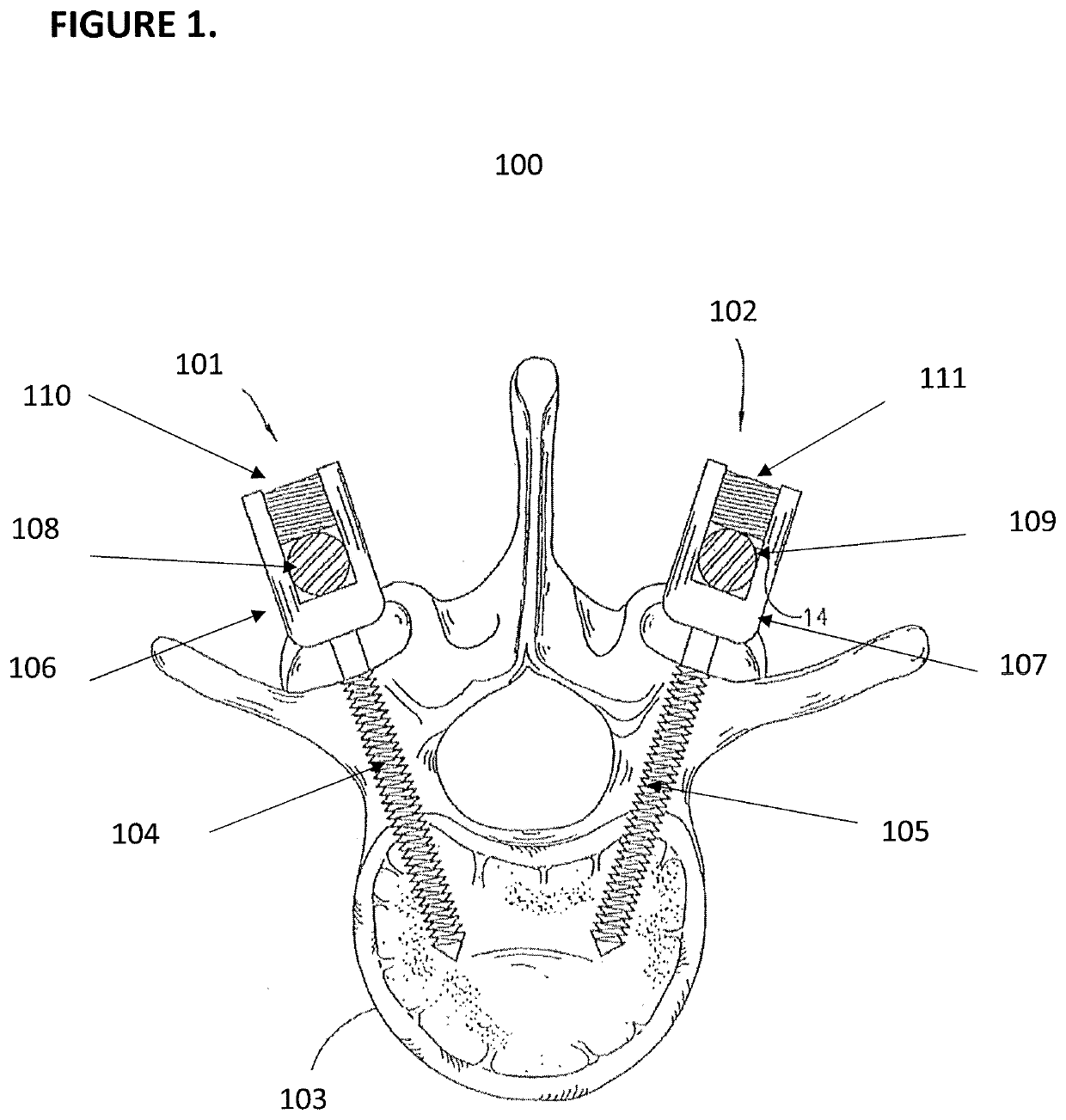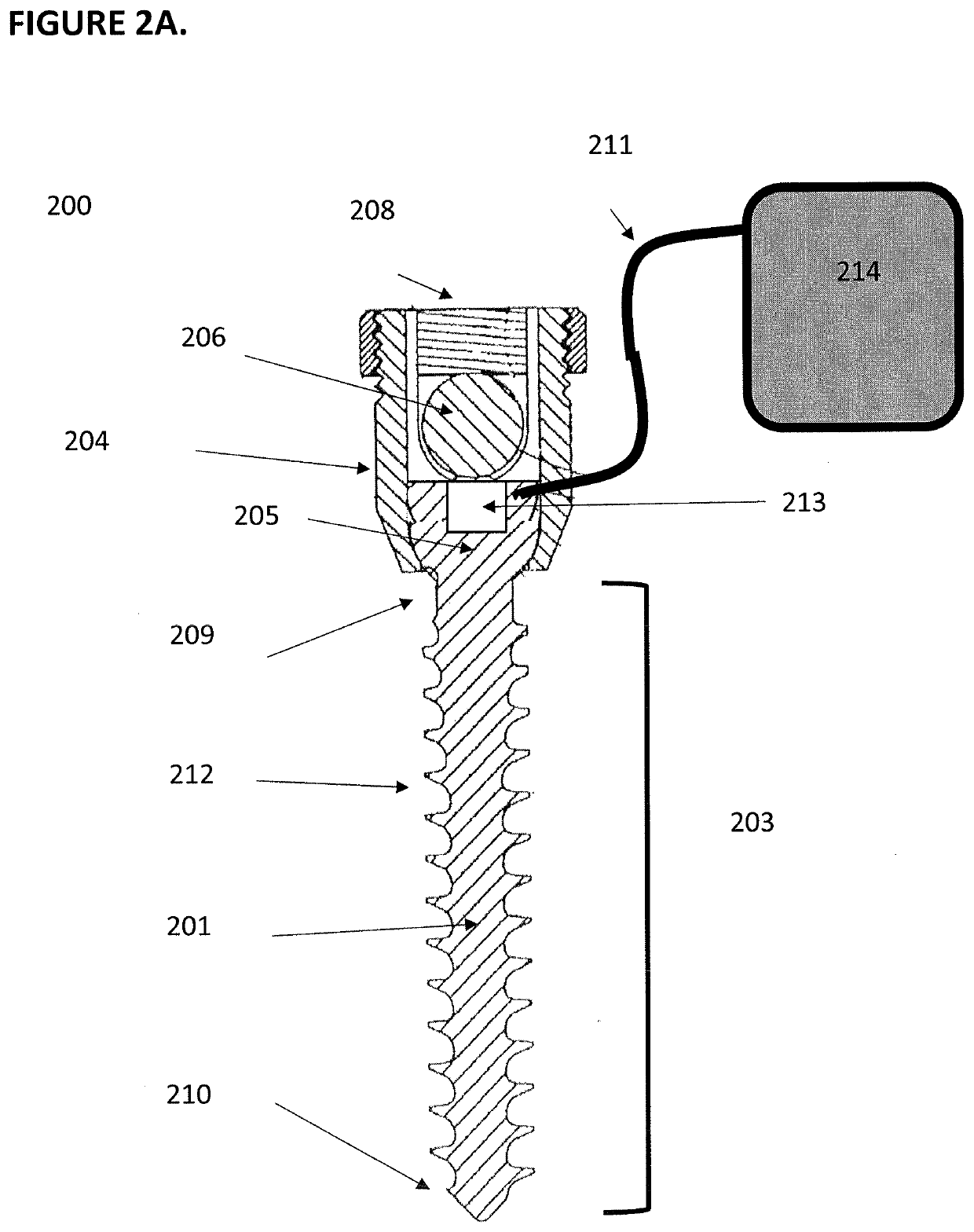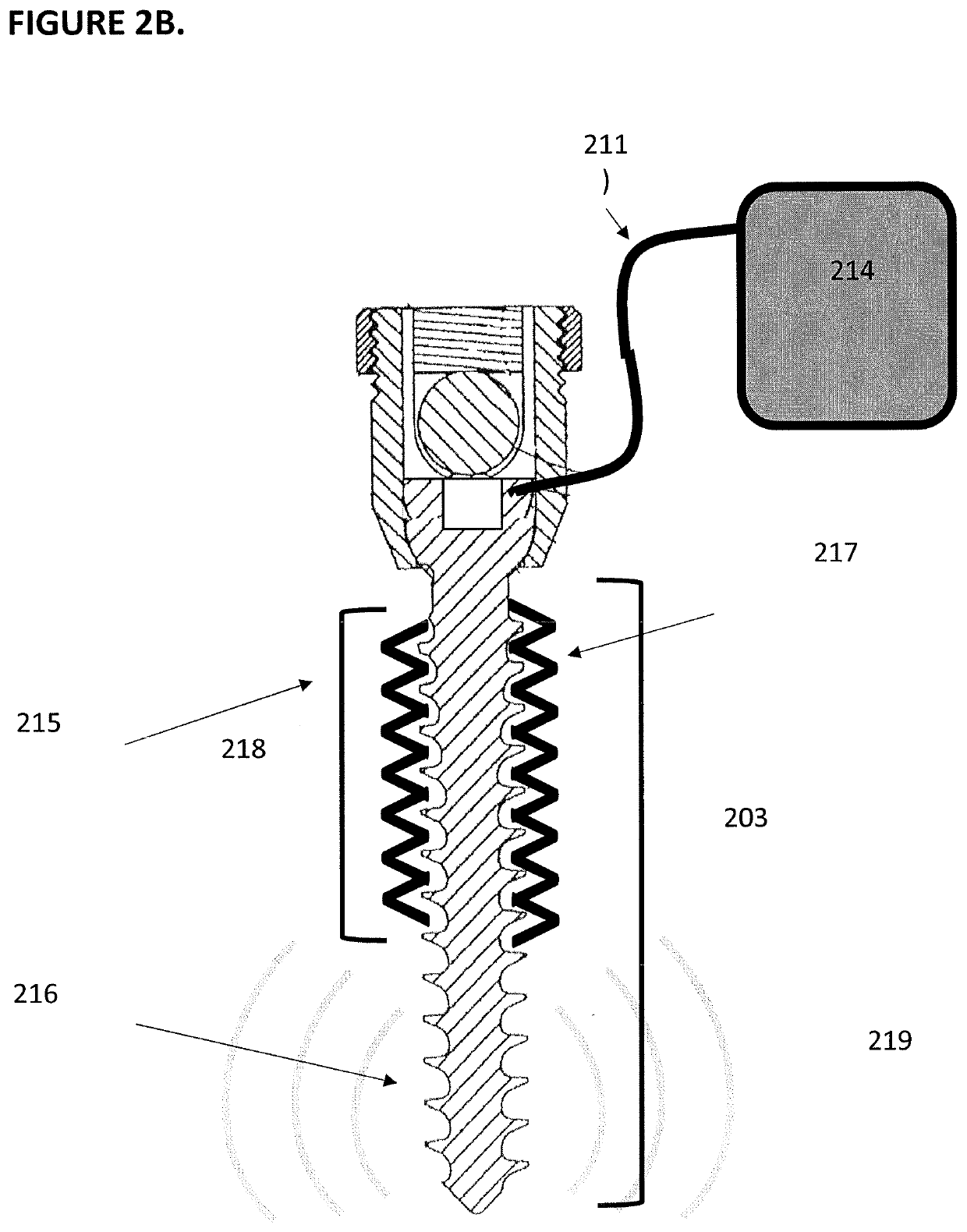Spinal instrumentation to enhance osteogenesis and fusion
a technology of spine and bone, applied in the field of spine fixation and osteogenesis, can solve the problems of poor bone stock, unstable bone, and easy failure of wire electrodes,
- Summary
- Abstract
- Description
- Claims
- Application Information
AI Technical Summary
Benefits of technology
Problems solved by technology
Method used
Image
Examples
example 1
[0073]Instrumented, single-level, posterior lumbar interbody fusion (PLIF) with autologous grant was performed at L4-5 in adult Toggenburg / Alpine goats, using both the spinal systems disclosed herein and standard spinal instrumentation (no electrical stimulation). At terminal time points (3 months, 6 months), animals were killed and lumbar spines were explanted for radiographic analysis using a SOMATOM Dual Source Definition CT Scanner and high-resolution Microcat II CT Scanner. Trabecular continuity, radiodensity, within the fusion mass, and regional bone formation were examined to determine successful spinal fusion.
[0074]Osteogenic instrumentation used in the present study consisted of systems described herein configured to focally deliver low-level DC directly into the vertebral bodies including a constant current source, 1 pair of anodized titanium rods, and 2 pairs of selectively anodized pedicle screws. Constant current sources delivering 40 μA DC were a microcircuit board and...
example 2
[0082]COMSOL Multiphysics software V4.3 (COMSOL, Inc., Burlington, Mass.) was utilized to simulate the electric field distribution evoked by electroactive pedicle screws in various tissue compartments and anatomical models of the human spine. Electrostatic, AC / DC, and electric current modules were utilized to model the delivery of various amplitudes of DC current from variably anodized pedicle screws. Resulting linear systems of equations were solved using the conjugate gradients solver and plotted in two and three dimensions. Numerical data was exported to MATLAB (MathWorks, Inc., Natick, Mass.) for further data processing and analysis.
[0083]Model pedicle screws were based on clinical instrumentation commonly utilized in posteriolateral interbody fusion (PLIF) of the human lumbar spine (screw dia.=6.0 mm, screw length=40 mm). Threaded, high-resolution pedicle screw models were created by importing and rending IGES files of human pedicle screws obtained from GrabCAD, Inc. (Boston, M...
PUM
 Login to View More
Login to View More Abstract
Description
Claims
Application Information
 Login to View More
Login to View More - R&D
- Intellectual Property
- Life Sciences
- Materials
- Tech Scout
- Unparalleled Data Quality
- Higher Quality Content
- 60% Fewer Hallucinations
Browse by: Latest US Patents, China's latest patents, Technical Efficacy Thesaurus, Application Domain, Technology Topic, Popular Technical Reports.
© 2025 PatSnap. All rights reserved.Legal|Privacy policy|Modern Slavery Act Transparency Statement|Sitemap|About US| Contact US: help@patsnap.com



